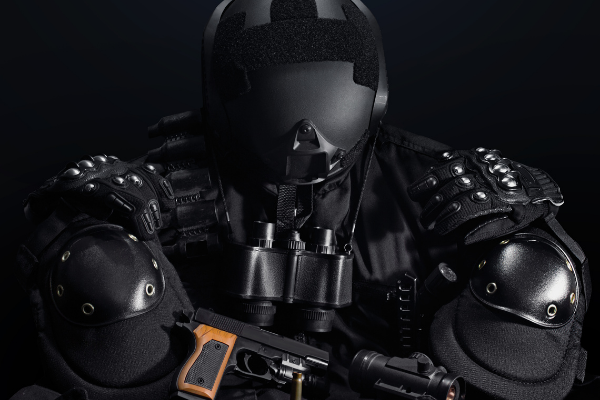Table of Contents
Given that blockchain is ever-present in any cybersecurity forum or discussion, it is not surprising that military organizations around the world are taking a lot of interest in it in recent years. Secure communications is one example of how blockchain is demonstrating its potential in military applications.
The ability to transmit communications securely between units is one of the most fundamental requirements for any military organization, particularly in times of war. Cybersecurity is obviously another huge consideration within the military. However, decentralized ledgers, smart contracts and other related technologies also offer other great opportunities to solve existing problems within the military space.

Military blockchain applications in practice
Military drone technology.
In 2018 Google made headlines around the world due to its controversial involvement in Project Maven, led by the U.S. Department of Defense. The project aimed to help the military analyze drone imagery faster using AI and machine learning technology. However, Google employees asked the company to withdraw from the project and soon after, the company announced that it would not renew the contract it had with the defense department, ending its involvement in 2019.
Aside from the controversy generated, the convergence of AI and blockchain with drone technology creates formidable possibilities in military applications. In addition to analyzing and reporting on imagery in real time, AI can power autonomous drones. These can fly completely independently, without any intervention or control by a human.
Blockchain can record data collected by AI-managed drones immutably and in real time. It can also record flight decisions and actions taken by the drone. Each drone operating is part of a decentralized network, so if it is destroyed, everything it has collected or performed would be accessible by the records it has left on the blockchain.
Camera drones have become very mainstream in recent years. However, their first use was in the military. Drones carry out air strikes and reconnaissance missions that protect military personnel from having to enter dangerous territories. Until now, however, each drone has required a human operator.
Using autonomous drones, armies could create true swarms which would mean having far more firepower than they can bring to human-controlled drones.
Blockchain battleships
Battleships are equipped with a wide range of different types of armaments. Weapons of different firepower, but also missile launchers, torpedo launchers and anti-aircraft batteries. In the face of enemy fire, all these weapons must be able to work together seamlessly. This is based on sensor technology integrated with weapon control systems. The naval vessels of many countries, including the United States, Japan and Spain, rely on one system to do this: the Aegis Combat System. This system has been managing the weapon system of naval battleships for the past five decades.
Despite its age, the Aegis is a highly sophisticated tool of military technology. It uses a complex system of radars and powerful computers to make decisions in just two seconds. In that time it is able to control weapons deployment, deciding when and in which direction to fire at external threats. However, it has a crucial weakness: it is a centralized system, if Aegis is destroyed you can disable the ship.
Decentralization therefore has clear advantages for a system like Aegis, leading to speculation that blockchain is the future of battleship control systems. By using blockchain’s ability to verify that all nodes are working from the same data set, the system can coordinate weapons control to neutralize threats.
Lockheed Martin is the defense supplier that manufactures the Aegis Combat System. In 2017, the company partnered with Guardtime Federal, which was created in 2014 to “exclusively support the cybersecurity and related requirements of the Department of Defense, the U.S. Intelligence Community, other U.S. government departments, and the industry community that supports these U.S. government organizations.”
The partnership has enabled Lockheed Martin to incorporate blockchain into its supply chain risk management, software development and systems engineering processes. The company is the first U.S. defense contractor to implement the distributed accounting technology. It appears that, with this rapid pace of development and adoption, “blockchain battleships” could soon be one of the military blockchain applications in wider use.

Additive manufacturing
Additive manufacturing (AM) is the military term for what most people know as 3D printing. The U.S. military builds prototypes and parts for weapons and vehicles using AM methods. In 2017, the U.S. Navy printed an entire submersible in just four weeks.
However, it is believed that one of the reasons AM has not achieved widespread adoption across manufacturing supply chains is the absence of a “digital thread.” A 2016 Deloitte paper defines the digital sub-process as a union of three main components: undefined ability to store and reference data, means to identify if a design is not working properly or needs improvement, and the scalability to move the production process forward by applying process improvements using data collected from each previous step.
The U.S. Navy has already seen the potential that blockchain can bring to AM processes. Since 2017, it has been committed to integrating blockchain within each step of an AM operation. The use of a decentralized network would meet the requirements of the digital thread. It provides a secure and theoretically unlimited data store, enables data sharing throughout the AM process using network nodes, and could also prove to be an enabler for the widespread adoption of AM in general manufacturing supply chains in the coming years.




